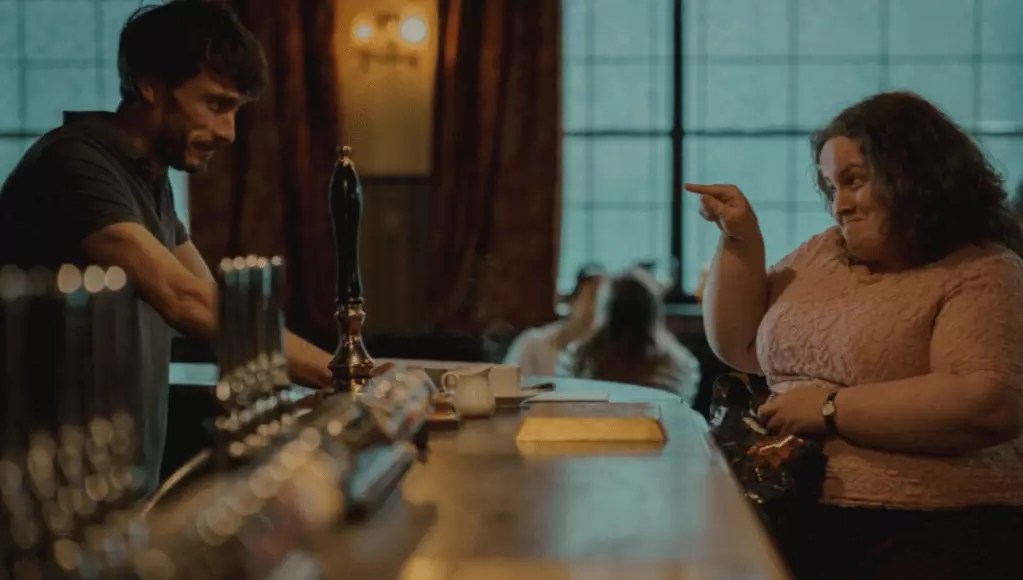The realm of entertainment often finds itself in murky waters where reality blurs with fiction, but the case of Richard Gadd’s “Baby Reindeer” thrusts these complexities into glaring focus. Following Gadd’s recent Emmy triumphs, a shadow has emerged in the form of Fiona Harvey, a woman who alleges that Gadd’s portrayal of her character in the Netflix series has led to her severe emotional distress. Her claims raise critical questions about the ethics of storytelling, the responsibilities of creators, and the consequences of public narrative.
The Personal Toll of Public Narrative
At the heart of the issue is Harvey’s assertion that she has been profoundly affected by her depiction in “Baby Reindeer,” a show inspired by Gadd’s experiences with a woman he claims harassed him. Harvey’s vivid depiction of her struggles—ranging from anxiety to insomnia—paints a bleak picture of an individual painted as a villain in a public spectacle. She has indicated that her life has been upended since her identification as the figure behind the character “Martha,” detailing the debilitating effects that include panic attacks and an inability to venture outside her home. The psychological ramifications of being spotlighted in such a manner cannot be overstated, prompting a deeper examination of the potential consequences of creative works.
The unfolding legal saga is a pivotal aspect of this story. Harvey’s $170 million lawsuit against Netflix, attributed to defamation and emotional distress, underscores the seriousness of her claims. Here, we see a glaring dichotomy between the accolades received by Gadd, who has swiftly ascended to the heights of comedy fame, and Harvey’s struggle for basic peace of mind. Her lawyer’s observations about the apparent disparity in their lives highlight the ethical implications of how public personas are constructed at the expense of private individuals.
Furthermore, fundamental questions arise: To what extent should creators be allowed to draw inspiration from real life? When does artistic license cross the line into defamation, particularly when real people become instantaneously identifiable within fictional narratives? This case highlights the nuances of intellectual property, personal identity, and the creative process, prompting both legal and ethical considerations that warrant serious exploration.
The Responses: Defense of Artistic License
Gadd has responded to the backlash by asserting that “Baby Reindeer” is a dramatized version of his life experiences, as noted in his statement to the California courts. His claim that the show does not strictly adhere to reality serves as a defense against the allegations of defamation, suggesting that viewers should recognize the distinctions between fact and artistic representation. Netflix, too, backs Gadd, with CEO Ted Sarandos emphasizing the intention behind labeling the series as a “true story.” This brings forth a critical debate regarding the interpretation of such labels and the responsibilities of streaming platforms to their viewers and the subjects within their content.
Sarandos suggests that it was never meant to be taken at face value, which may absolve Gadd and Netflix of blame in some legal circles, yet it risks undermining the personal toll Harvey has claimed to endure. This tension between creative freedom and moral obligation invites further scrutiny into a system where profit often outweighs personal considerations.
In a world increasingly hungry for authenticity, does “Baby Reindeer” successfully navigate the line between true life and myth? Gadd’s assertion that the narrative is largely fictionalized may provide him protection, but it further complicates how society perceives truth in storytelling. The creative arts have long been a means to reflect societal experiences; however, with that power comes an ethical burden to consider the impact on individuals represented, however indirectly.
Harvey’s case serves as a poignant reminder that behind every story, whether fact or fiction, there lies the potential for real human consequences. As viewers, critics, and creators alike, our engagement with narratives must be tempered by a profound understanding of their implications. The future of storytelling may well hinge on balancing creative expression with respect for the lives intertwined within those narratives.


Leave a Reply